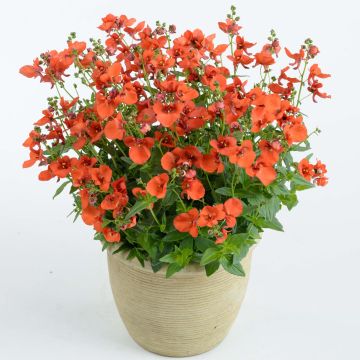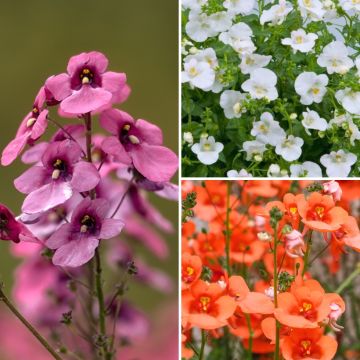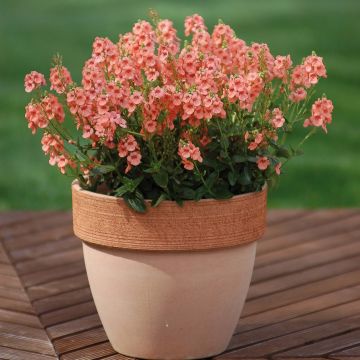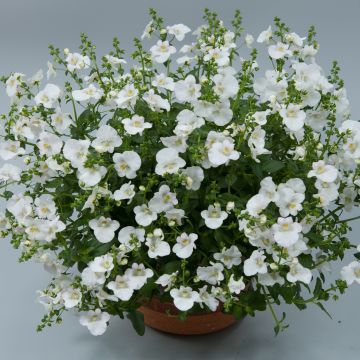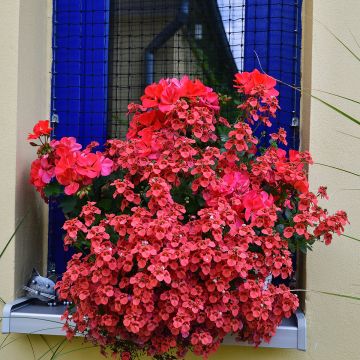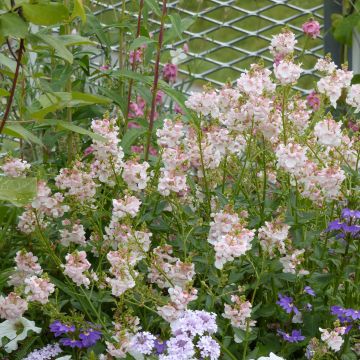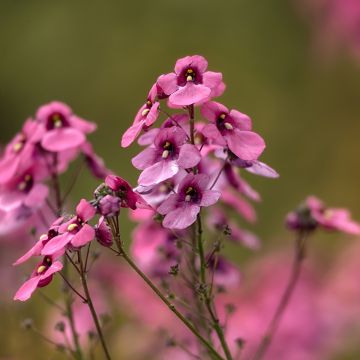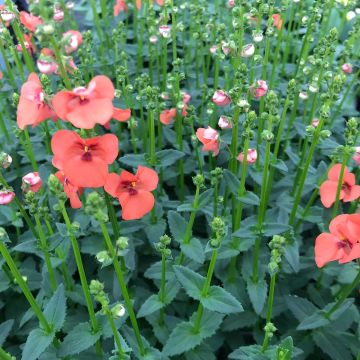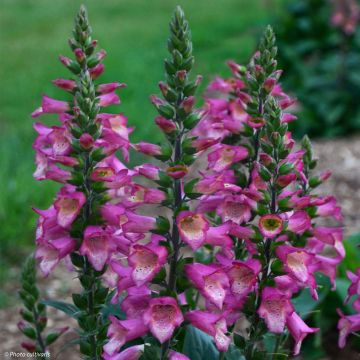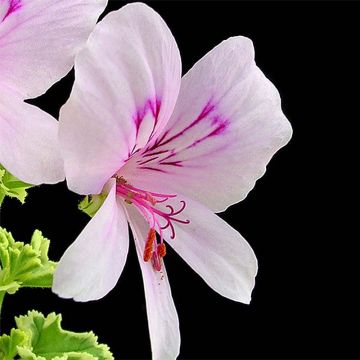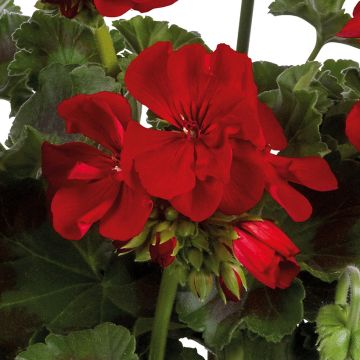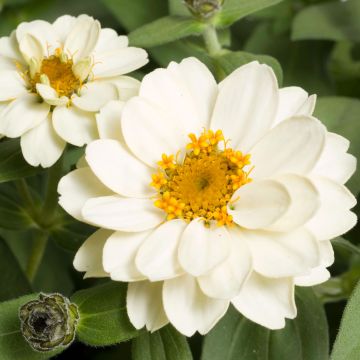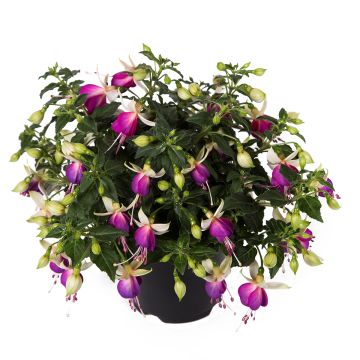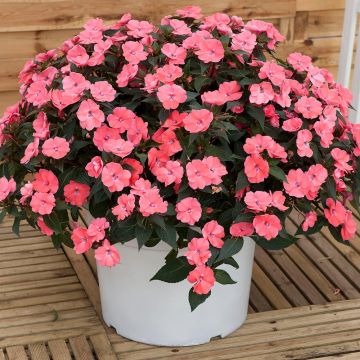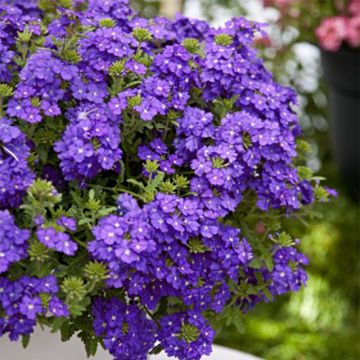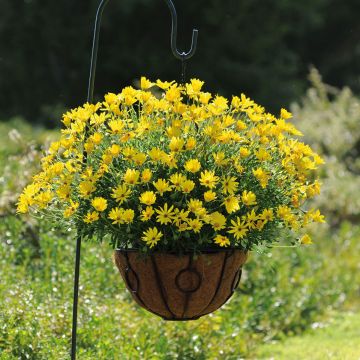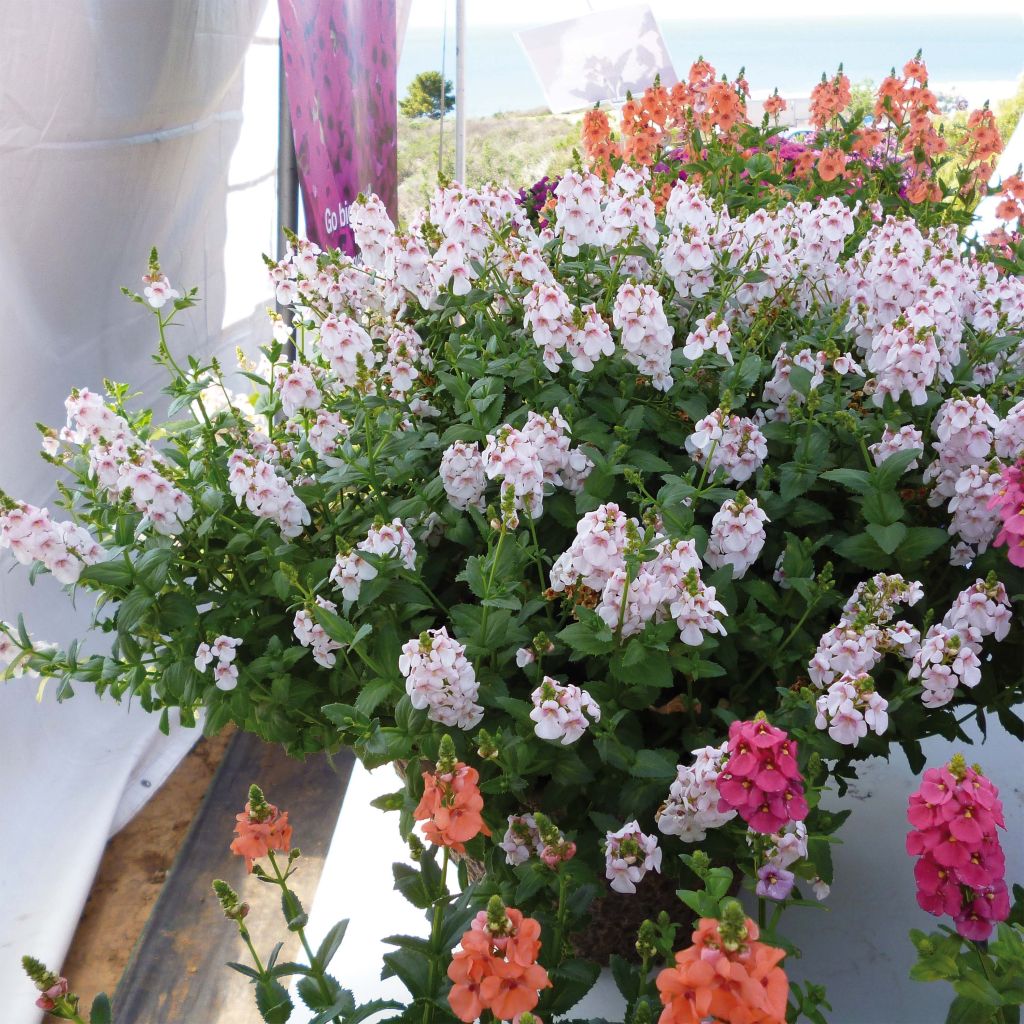

Diascia Sundascia Upright Sakura Pink - White Diascia with pink heart
Diascia Sundascia Upright Sakura Pink - White Diascia with pink heart
Diascia barberae Sundascia Up Sakura Pink
Twinspur
This item cannot be shipped to the selected country
Delivery charge from €5.90
More information
Schedule delivery date,
and select date in basket
This plant carries a 6 months recovery warranty
More information
We guarantee the quality of our plants for a full growing cycle, and will replace at our expense any plant that fails to recover under normal climatic and planting conditions.
From €5.90 for pickup delivery and €6.90 for home delivery
Express home delivery from €8.90.
Does this plant fit my garden?
Set up your Plantfit profile →
Description
Diascia Sundascia 'Upright Sakura Pink' is part of a series of Diascia selected for their decorative and long-lasting flowering, their robustness, and their excellent heat resistance. It is a small, bushy plant with a nicely upright habit, which produces longer, stronger spikes of charming bicoloured flowers, white with a small pink heart. They continue to bloom for several months, until the first frost, standing out perfectly above its dark green foliage. This less hardy perennial plant loves the sun and well-drained soils. Well known for its use in hanging baskets and containers, it is also very attractive in rock gardens or low borders.
Diascia Sundascia 'Upright Sakura Pink' belongs to the family Scrophulariaceae. It is a recent cultivar derived from Diascia barberae, a species native to southern Africa, specifically Lesotho and KwaZulu-Natal. This less hardy perennial plant has an upright habit, forming a neat little bush, even in the rain, with a height of 35cm (13.8in) and a width of 30cm (11.8in). The flowering starts in June and lasts until the first frost. It produces clusters of flowers with broad labellums, hanging downward with two spurs. The flower diameter does not exceed 2cm. These flowers somewhat resemble snapdragons. The foliage, deciduous to semi-evergreen in winter depending on the climate, is composed of small, 2cm (0.8in) long, heart-shaped leaves with toothed edges, dark green in color. In well-drained soil, the plant can survive brief freezes around -7°C.
Diascia Sundascia 'Upright Sakura Pink' is most often cultivated as an annual plant in our latitudes, thanks to its generosity and rapid growth. It can be used in the ground and in pots, planted in masses in borders, alone or mixed with other low-growing species such as lithodora, silver baskets, and aubrietas. Due to its bushy, upright and branched habit, it will look good in flower beds, as ground cover, in rock gardens, in containers, or hanging in the gaps of walls and paving. In a floral composition, it can be associated, for example, with morning glories, Nemophila, lobelias, and Isotomas.
Note: Please be aware that our young plants in mini-modules are professional products intended for experienced gardeners: upon receipt, transplant and store them under cover (conservatory, greenhouse, cold frame...), at a temperature above 14°C for a few weeks before being planted outside once the risk of frost has definitively passed.
Report an error about the product description
Diascia Sundascia Upright Sakura Pink - White Diascia with pink heart in pictures
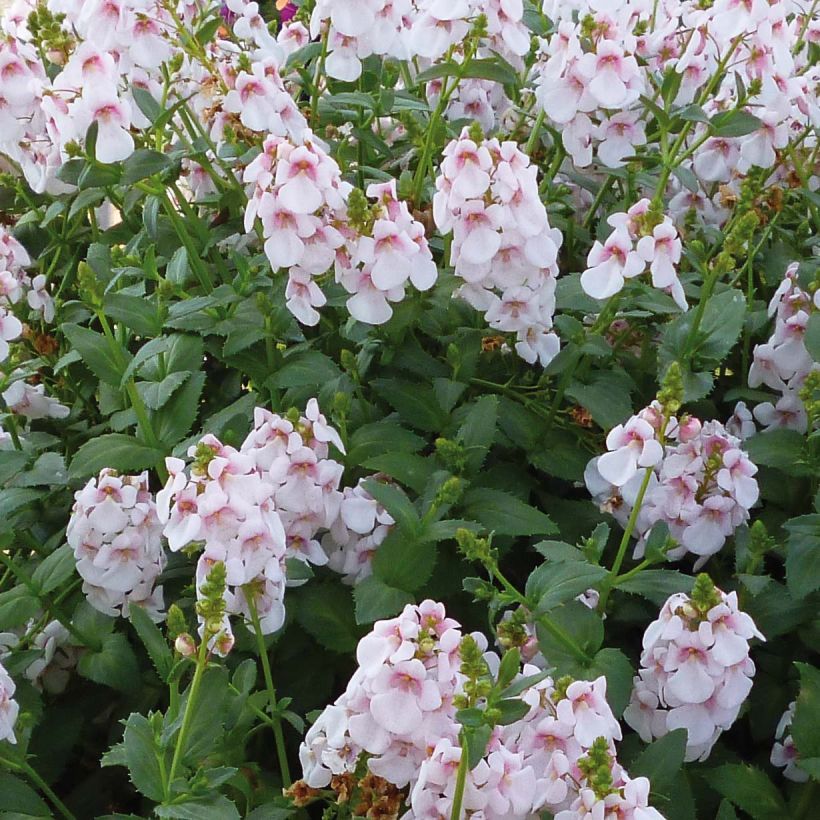

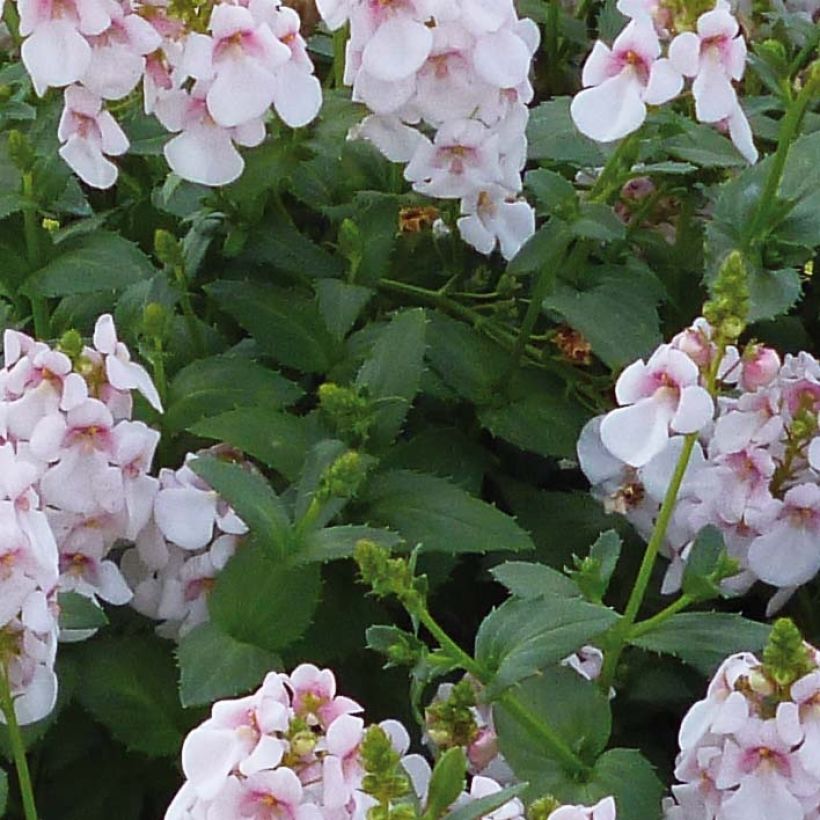

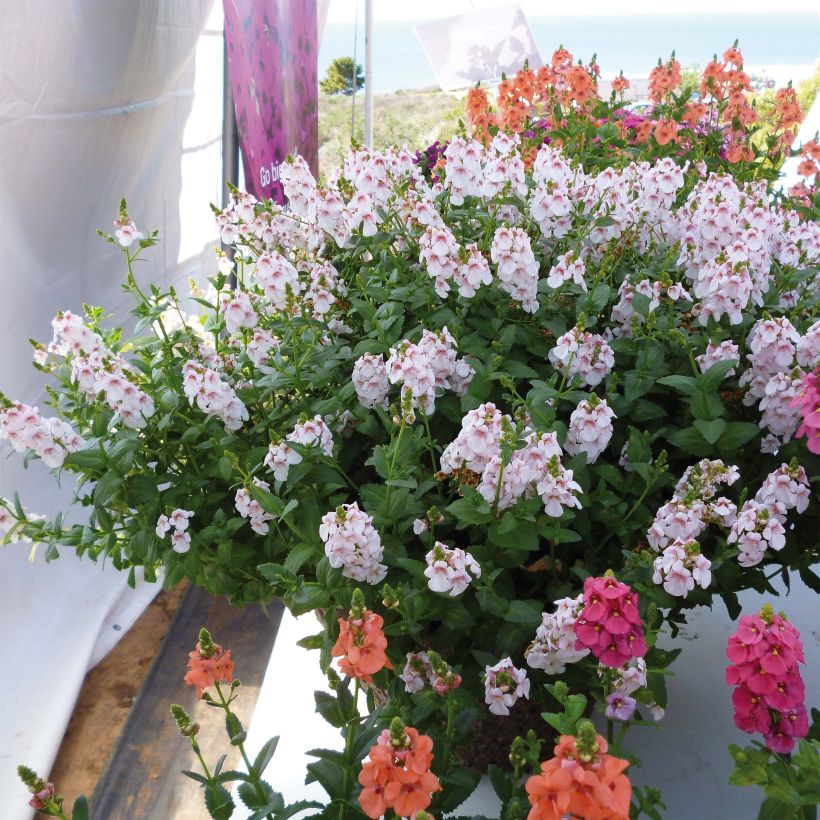

Flowering
Foliage
Plant habit
Botanical data
Diascia
barberae
Sundascia Up Sakura Pink
Scrophulariaceae
Twinspur
Cultivar or hybrid
Other Annual Diascia
Planting and care
Install the Diascia Sundascia 'Upright Sakura Pink' in open ground or in pots, after the end of frost, in fertile soil to support flowering, occasionally moist to dry, humus-rich, perfectly drained. This plant dreads stagnant humidity. The further south you go, the more the plant fears the scorching afternoon sun and dry soils. It is useful to pinch the terminal shoots to accentuate the bushy habit. Prune the faded stems after flowering. This diasca is hardy up to approximately -7°C, in perfectly drained soil. In winter, outside mild climate regions, it is preferable to shelter this tender plant in a cold greenhouse or unheated conservatory.
Planting period
Intended location
Care
This item has not been reviewed yet - be the first to leave a review about it.
Plug plants - Annuals
Haven't found what you were looking for?
Hardiness is the lowest winter temperature a plant can endure without suffering serious damage or even dying. However, hardiness is affected by location (a sheltered area, such as a patio), protection (winter cover) and soil type (hardiness is improved by well-drained soil).

Photo Sharing Terms & Conditions
In order to encourage gardeners to interact and share their experiences, Promesse de fleurs offers various media enabling content to be uploaded onto its Site - in particular via the ‘Photo sharing’ module.
The User agrees to refrain from:
- Posting any content that is illegal, prejudicial, insulting, racist, inciteful to hatred, revisionist, contrary to public decency, that infringes on privacy or on the privacy rights of third parties, in particular the publicity rights of persons and goods, intellectual property rights, or the right to privacy.
- Submitting content on behalf of a third party;
- Impersonate the identity of a third party and/or publish any personal information about a third party;
In general, the User undertakes to refrain from any unethical behaviour.
All Content (in particular text, comments, files, images, photos, videos, creative works, etc.), which may be subject to property or intellectual property rights, image or other private rights, shall remain the property of the User, subject to the limited rights granted by the terms of the licence granted by Promesse de fleurs as stated below. Users are at liberty to publish or not to publish such Content on the Site, notably via the ‘Photo Sharing’ facility, and accept that this Content shall be made public and freely accessible, notably on the Internet.
Users further acknowledge, undertake to have ,and guarantee that they hold all necessary rights and permissions to publish such material on the Site, in particular with regard to the legislation in force pertaining to any privacy, property, intellectual property, image, or contractual rights, or rights of any other nature. By publishing such Content on the Site, Users acknowledge accepting full liability as publishers of the Content within the meaning of the law, and grant Promesse de fleurs, free of charge, an inclusive, worldwide licence for the said Content for the entire duration of its publication, including all reproduction, representation, up/downloading, displaying, performing, transmission, and storage rights.
Users also grant permission for their name to be linked to the Content and accept that this link may not always be made available.
By engaging in posting material, Users consent to their Content becoming automatically accessible on the Internet, in particular on other sites and/or blogs and/or web pages of the Promesse de fleurs site, including in particular social pages and the Promesse de fleurs catalogue.
Users may secure the removal of entrusted content free of charge by issuing a simple request via our contact form.
The flowering period indicated on our website applies to countries and regions located in USDA zone 8 (France, the United Kingdom, Ireland, the Netherlands, etc.)
It will vary according to where you live:
- In zones 9 to 10 (Italy, Spain, Greece, etc.), flowering will occur about 2 to 4 weeks earlier.
- In zones 6 to 7 (Germany, Poland, Slovenia, and lower mountainous regions), flowering will be delayed by 2 to 3 weeks.
- In zone 5 (Central Europe, Scandinavia), blooming will be delayed by 3 to 5 weeks.
In temperate climates, pruning of spring-flowering shrubs (forsythia, spireas, etc.) should be done just after flowering.
Pruning of summer-flowering shrubs (Indian Lilac, Perovskia, etc.) can be done in winter or spring.
In cold regions as well as with frost-sensitive plants, avoid pruning too early when severe frosts may still occur.
The planting period indicated on our website applies to countries and regions located in USDA zone 8 (France, United Kingdom, Ireland, Netherlands).
It will vary according to where you live:
- In Mediterranean zones (Marseille, Madrid, Milan, etc.), autumn and winter are the best planting periods.
- In continental zones (Strasbourg, Munich, Vienna, etc.), delay planting by 2 to 3 weeks in spring and bring it forward by 2 to 4 weeks in autumn.
- In mountainous regions (the Alps, Pyrenees, Carpathians, etc.), it is best to plant in late spring (May-June) or late summer (August-September).
The harvesting period indicated on our website applies to countries and regions in USDA zone 8 (France, England, Ireland, the Netherlands).
In colder areas (Scandinavia, Poland, Austria...) fruit and vegetable harvests are likely to be delayed by 3-4 weeks.
In warmer areas (Italy, Spain, Greece, etc.), harvesting will probably take place earlier, depending on weather conditions.
The sowing periods indicated on our website apply to countries and regions within USDA Zone 8 (France, UK, Ireland, Netherlands).
In colder areas (Scandinavia, Poland, Austria...), delay any outdoor sowing by 3-4 weeks, or sow under glass.
In warmer climes (Italy, Spain, Greece, etc.), bring outdoor sowing forward by a few weeks.


































